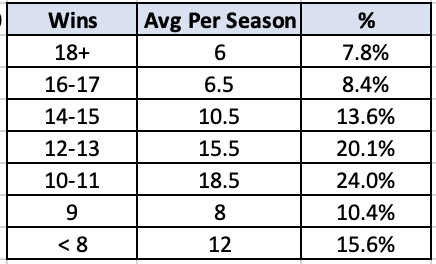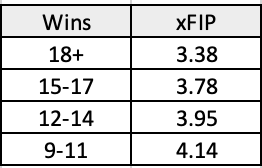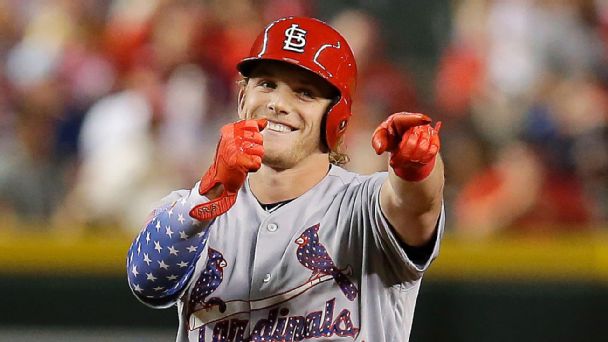I was listening to a fantasy baseball podcast that have “expert(s)” as hosts. I’ve been listening to the show for a while and I never understand their rationale for how they evaluate players. (After I’m done writing this I will stop listening to the podcast.)
Humans have a difficult time hearing ideas that are different than our beliefs. If I think Jose Altuve is overvalued I will only like to hear from people who agree with me. Or if I hear someone discuss the pros and cons, I will only remember the cons part of the argument. To avoid this bias, I do my best to listen to ideas that contradict my own; in fact, I try to uphold this belief in all aspects of my life.
So, I don’t mind if people have differing opinions than me. That said, if someone has an opinion, I want evidence that backs up their viewpoint.
Below are the 2019 statistics from FanGraphs. The ADP data is from NFBC (date range: 1/25 to 2/6). Of these two players which would prefer?

Player A is Tommy Edman and Player B is Jeff McNeil. In the podcast the hosts swooned over McNeil and shitted on Edman. I don’t understand the difference in ADP and/or why the podcast hosts felt the way they did. (If you listen to the podcast they do provide their reasons but it’s mostly anecdotal and chopped full of personal biases.)
In 1974 Paul Slovic and Daniel Kahneman did a study with professional horse handicappers. There were five rounds of betting. Each round consisted of ten races and with each subsequent round they received information of their own choosing. So, in round one they were given five pieces of information. In round two ten pieces and all the way up to 40 pieces of information.
What the researchers found was their accuracy didn’t improve with more information. However, what did improve was their confidence level. That’s pretty striking. It shows that after a certain amount of information, any extra information contributes to our earlier conclusion (i.e. confirmation bias). Also, if the new information disagrees with our conclusion we ignore the information.
Obviously both players had limited sample sizes last year (more so with Edman) but I used the numbers in the table above to come up with my projections for both players. In my experience the numbers I cited above are all the numbers I need to make a projection on a player; any more data or observations contributes to bias.

Among second basemen Edman and McNeil are ranked 9th and 11th respectively. I think these projections are reasonable. Edman’s numbers last year suggest he wasn’t overtly lucky, that he should be able to at least a be productive player for the Cardinals.
Edman’s detractors say he doesn’t have an everyday job and will begin the season as a super utility player. RosterResource has Edman as its everyday left fielder.
If you don’t believe Edman will play every day then who is going to play left field? Dylan Carlson is probably the best bet, but he has only played 18 games in triple-a. Tyler O’Neill? He’s not a good defender and I doubt he hits above .240 if he played every day. For his career he has 58.2% contact rate. To put that into perspective, Chris Davis in 2019 had a 62.9% contact rate, the lowest among all hitters with at least 300 plate appearances. Lane Thomas? I don’t much about him, but his scouting report suggests he’s maybe a 4th outfielder type. Also, Dexter Fowler and Matt Carpenter only have jobs because of their contract, Harrison Bader, who they demoted after he got off to a slow start. In my mind there is far greater chance Edman gets 540 at-bats than 350-400.
I don’t want to make it sound like I’m being petty and/or overly critical about the hosts of the podcast, but there have been further evidence that I don’t believe they have any idea on how to evaluate players.
Another example is Matt Olson. He’s currently being drafted as the 4th first baseman, 58.84 ADP. The podcast hosts had no idea why Olson was being taken so high. They said that he would have to hit 50 home runs in order to be taken that high.
Let’s look at his numbers. The table below shows the statistics for his 2019 season, his prorated 2019 season (if he played a full year) and my 2020 projection.

Olson is currently my 4th rated first basemen and he’s my 46th overall hitter, which is pretty in-line with his current ADP. The Athletics love to platoon hitters, but Olson is going to play every day. His bat and glove are too good not to be in the lineup. Anyway, based on my projections I don’t think it’s crazy that Olson is going where he’s going. What is crazy is for someone, especially expert(s), to say it’s ludicrous to draft him at his current ADP.
Maybe I’m being an internet troll but at the very least this is a podcast I can no longer listen to. Maybe they’re right and I’m wrong. I can no longer listen because our method of evaluation is completely different.








